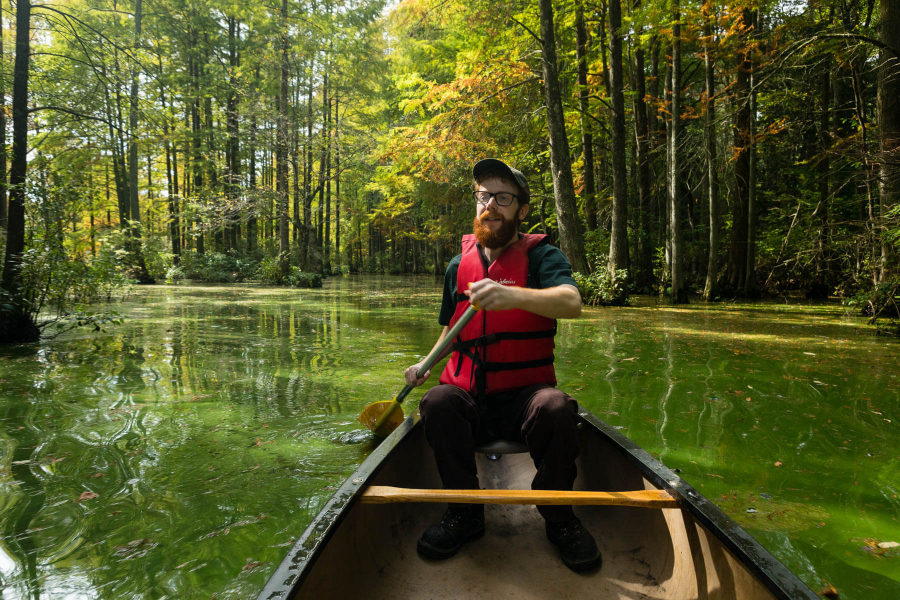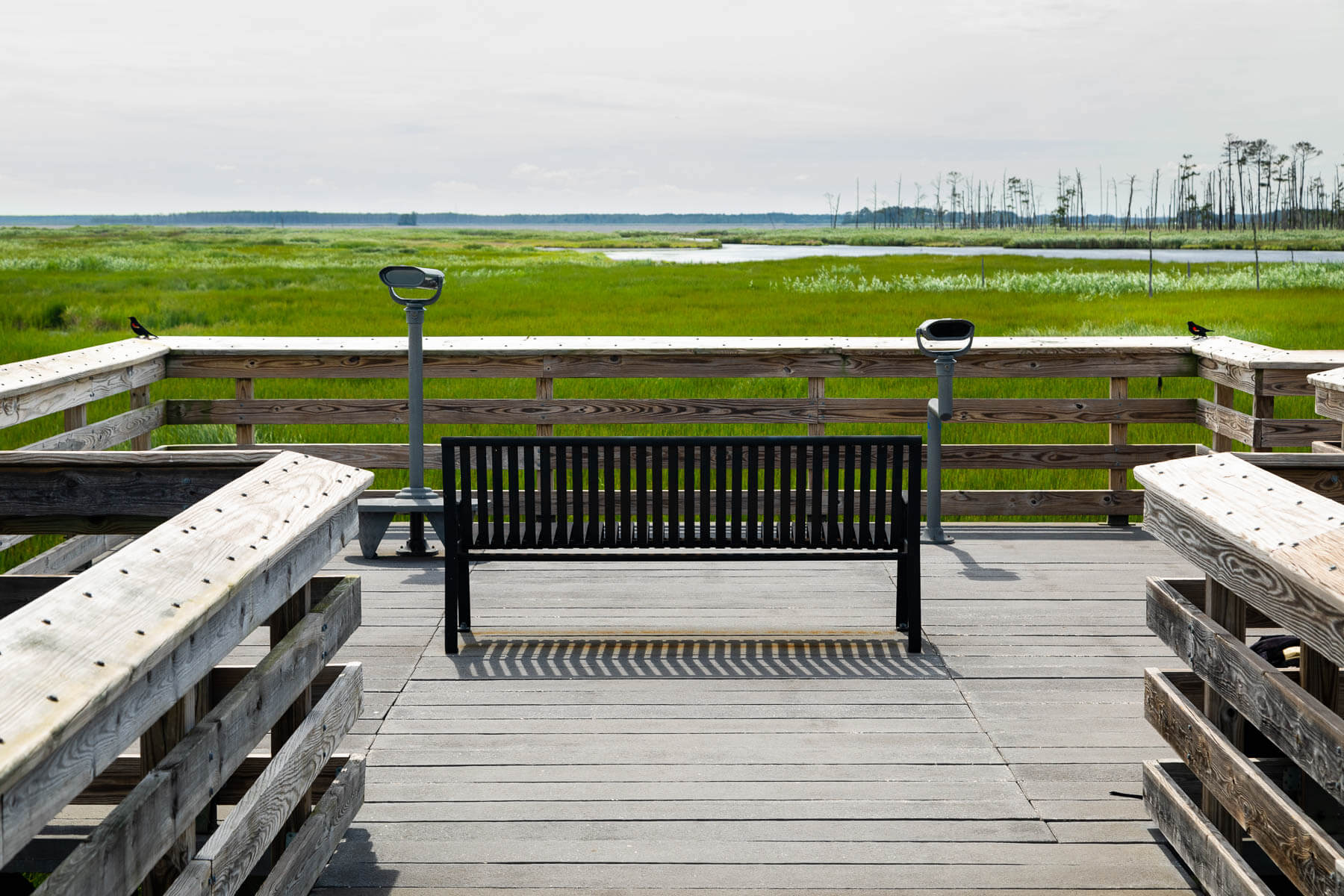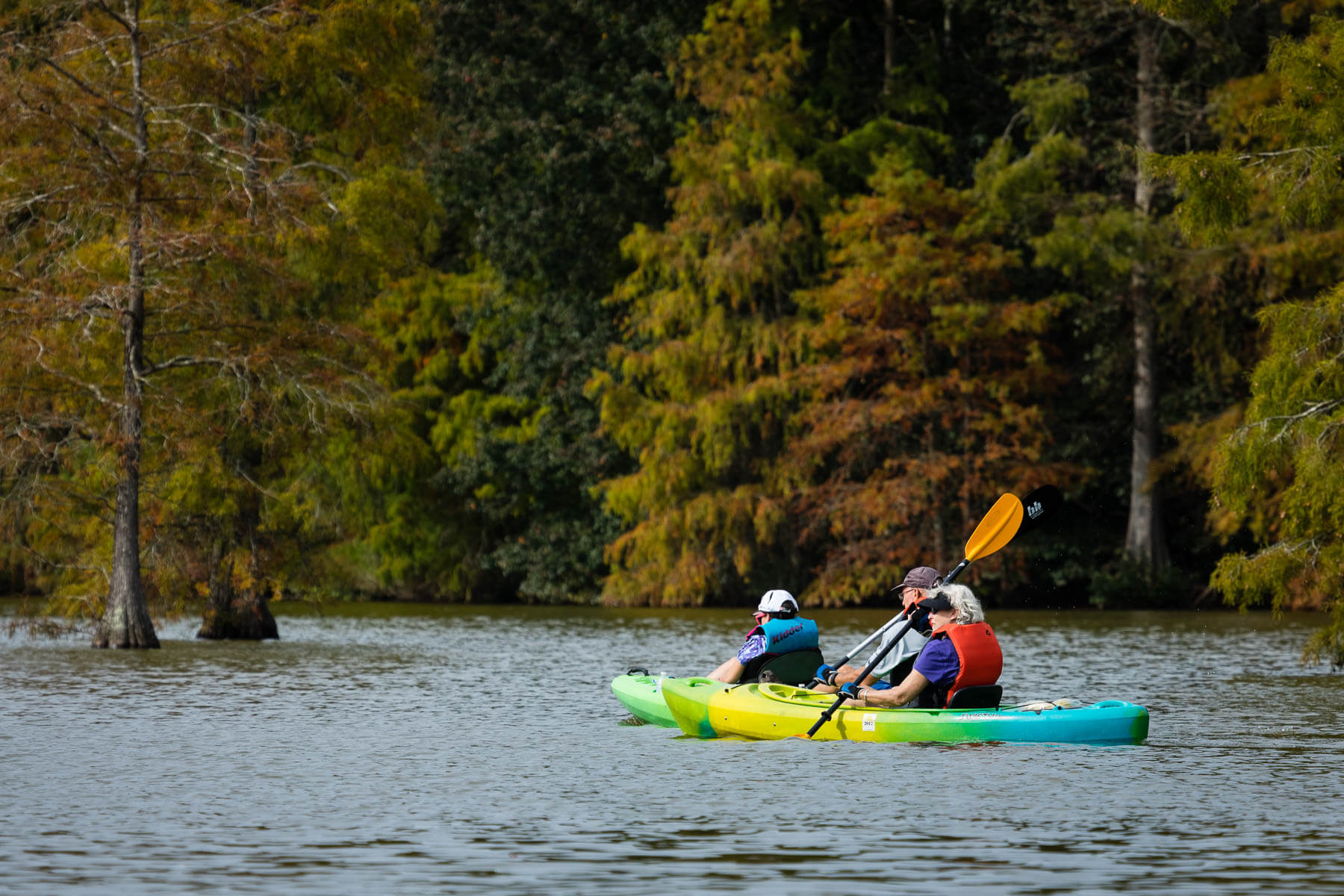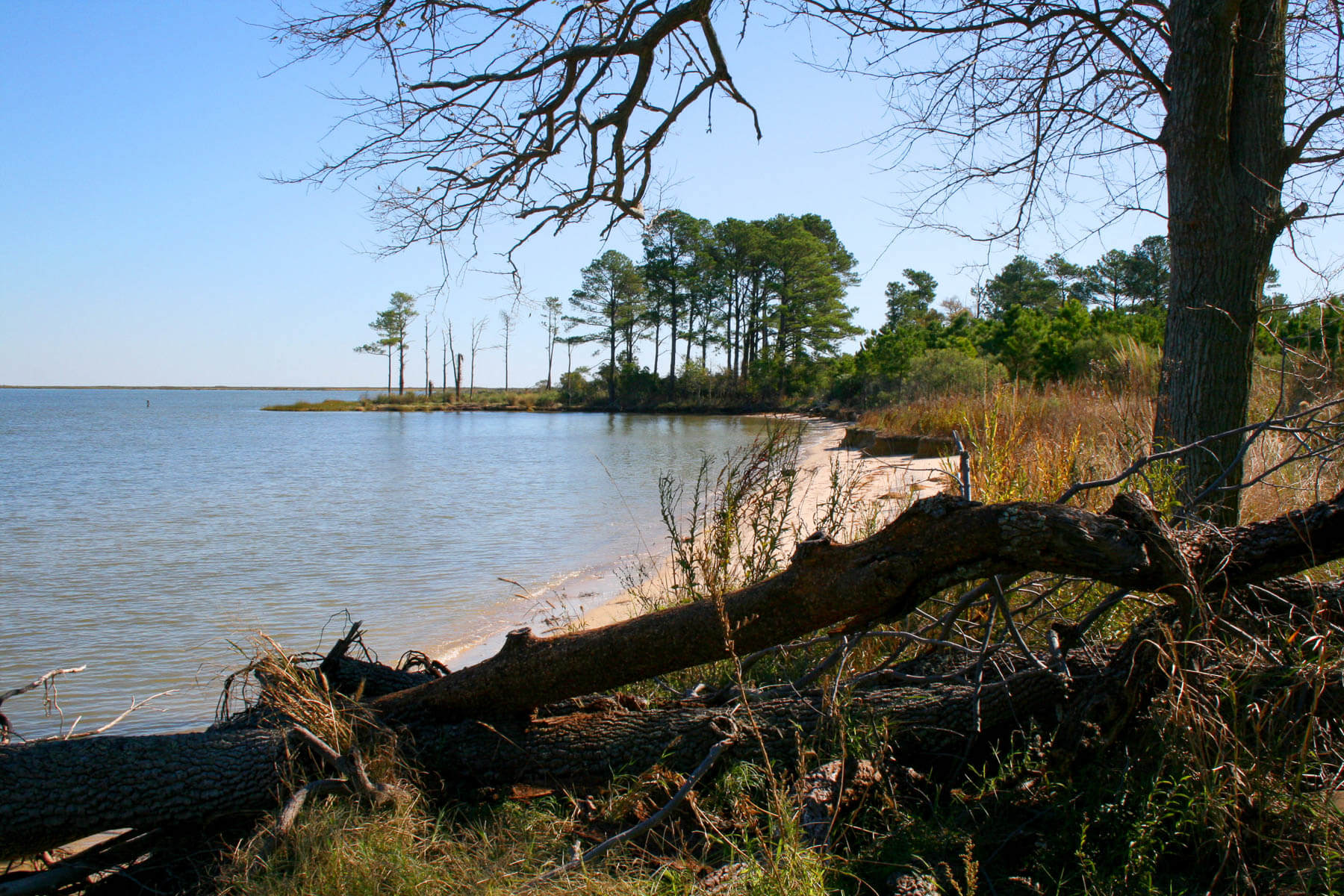Get to know these five Chesapeake Bay wetlands



Wetlands are critical Chesapeake Bay habitats that benefit both the environment and our lives. They provide rich habitat for wildlife, help make our water cleaner by filtering pollutants and offer recreational opportunities such as hiking, fishing and kayaking. Here are five Chesapeake Bay wetlands you can visit in Maryland, Virginia, Delaware and Pennsylvania.
Blackwater National Wildlife Refuge (Maryland)

Blackwater National Wildlife Refuge is often called the “Everglades of the North” due to its incredible plant and animal diversity. Located on Maryland’s Eastern Shore, it contains one-third of the state’s tidal wetlands, making it an ecologically important area that has been recognized as a “Wetland of International Importance.” The 26,000-acre refuge is prime bird habitat, most notably for the tundra swan and is home to one of the largest breeding populations of American bald eagles on the East Coast. The refuge offers four walking trails, three water trails and one Wildlife Drive automobile route.
Jug Bay Wetlands Sanctuary (Maryland)

Jug Bay Wetlands Sanctuary protects about 1,700 acres of diverse ecosystems along the Patuxent River. The tidal freshwater marshes, forested wetlands, upland and riparian forest, creeks, meadows and pine and sand barrens within the Sanctuary provide rich habitat for several species of mammals, amphibians, reptiles, birds, fish and plants. Located within 20 miles of both Washington D.C. and Annapolis, the Sanctuary offers 19 miles of trails and numerous educational programs by the Friends of Jug Bay organization.
Trap Pond State Park (Delaware)

The freshwater wetlands in Trap Pond State Park once covered a large portion of Sussex County in Delaware. The park is well-known for containing the northernmost natural stand of bald cypress trees in the United States, an iconic southern swamp species whose roots often form “knees” above the water. Paddlers can visit these trees up close on two water trails. Elsewhere in the park, observant visitors can see otters, water snakes and several bird species along hiking and water trails.
Black Moshannon State Park (Pennsylvania)

Black Moshannon State Park covers over 3,000 acres of forests and wetlands. The park’s name comes from the dark, “tea-colored” water in Black Moshannon Lake, which is fed by clear springs and streams that change color from plant tannins that filter through wetland, as well as bog plants such as sphagnum moss. A bog in the park also provides habitat for unique species typically located in the southeastern U.S., such as carnivorous plants and orchids. The low level of nutrients and high acidity of the bog makes it difficult for most plants to live there, but these specialized plants can thrive.
Dameron Marsh Natural Area Preserve (Virginia)

The Dameron Marsh Natural Area Preserve is one of several protected state lands along the shoreline of the Chesapeake Bay in Virginia. The wetlands in the Preserve are one of the most significant nesting and feeding areas for marsh birds, and the sandy shoreline is very important for the federally threatened northeastern beach tiger beetle. Visitors can enjoy the Preserve through walking trails, a boardwalk, wildlife viewing platforms and launch sites for kayaks, canoes and other small watercraft.
Preserving wetlands
These five wetlands provide unique beauty and ecological benefits to the Chesapeake Bay region. You can discover even more Chesapeake Bay wetlands and other natural areas at Find Your Chesapeake, while the Chesapeake Bay Program’s Wetlands Work initiative can help you protect wetlands that are right on your property.

Comments
Been to Blackwater numerous times and never tire of it. Been to Jug as well...it is a beautiful place
Thanks for the list! I am excited to visit Jug Bay- it's actually pretty close to me. Especially excited to visit Black Moshannon once it is safe to travel.
Thank you!
Your comment has been received. Before it can be published, the comment will be reviewed by our team to ensure it adheres with our rules of engagement.
Back to recent stories